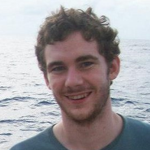Stimulating immune cells with two cancer immunotherapies together can shrink the size of the viral “reservoir” in SIV (simian immunodeficiency virus)-infected nonhuman primates treated with antiviral drugs, Emory researchers and their colleagues have concluded. The reservoir includes immune cells that harbor virus despite potent antiviral drug treatment.
The findings, reported in Nature Medicine, have important implications for the quest to cure HIV because reservoir shrinkage has not been achieved consistently before. However, the combination treatment does not prevent or delay viral rebound once antiviral drugs are stopped. Finding an HIV cure is important because, although antiretroviral therapy can reduce the amount of circulating virus to undetectable levels, problematic issues remain such as social stigma in addition to the long-term toxicity and cost of antiretroviral drugs.
“It’s a glass-half-full situation,” says senior author Mirko Paiardini, PhD. “We concluded immune checkpoint blockade, even a very effective combination, is unlikely to achieve viral remission as a standalone treatment during antiretroviral therapy.”
He adds the approach may have greater potential if combined with other immune-stimulating agents. Or it could be deployed at a different point — when the immune system is engaged in fighting the virus, creating a target-rich environment. Other HIV/AIDS researchers have started to test those tactics, he says.
Paiardini is an associate professor of pathology and laboratory medicine at Emory University School of Medicine and a researcher at Yerkes National Primate Research Center. The study performed in nonhuman primates, considered the best animal model for HIV studies, was carried out in collaboration with co-authors Shari Gordon and David Favre at the University of North Carolina at Chapel Hill and GlaxoSmithKline; Katharine Bar at the University of Pennsylvania; and Jake Estes at Oregon Health & Science University. Read more








